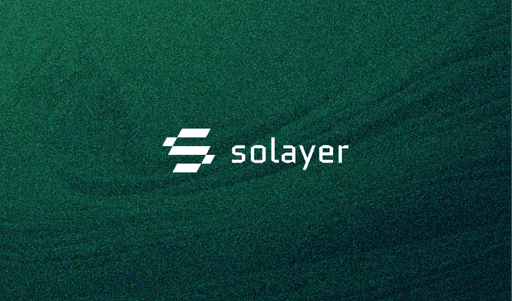Solayer Restaking: Insights into Epoch 4
Introduction to Solayer Restaking Analysis
The Solayer Restaking Epochs are a strategic initiative aimed at ensuring the safety and security of our protocol developments while enhancing the user experience. These carefully managed phases create a secure and efficient environment for participants, facilitating seamless interactions and maximizing benefits.
The first epoch was announced on May 14, 2024, and we are currently in Epoch 4, which began on July 30, 2024. This analysis covers delve into epoch 4
Staking on Solayer
Solayer Restaking allows SOL or Liquid Staked SOL (LST) holders to participate in "delegated consensus." Participants restake their assets into the Solayer Restaking Vault, where they are delegated to a group of operators who then validate and earn rewards on other networks.
For native SOL restaking, Solayer first converts SOL into an intermediary form called sSOL-raw, the Liquid Staking Token (LST) issued by the stake pool manager. sSOL serves as the universal liquidity layer for delegates, dApps, and LRTs on Solayer. Each unit of SOL is essentially a unit of blockspace lent towards dApps, securing network bandwidth and transactions per second (TPS).
A Liquid Staking Token (LST) represents the staked amount of a cryptocurrency on a Proof-of-Stake (PoS) blockchain. LSTs allow participants to stake while maintaining the flexibility to buy, sell, or trade the token, offering more liquidity.
Solayer supports the deposit of other LSTs, including:
- Marinade Staked SOL (mSOL)
- Jito Staked SOL (JitoSOL)
- BlazeStake Staked SOL (bSOL)
- Infinity (INF)
- SolanaHub Staked SOL (hubSOL)
Upon depositing, participants receive the corresponding Solayer LST, depending on the deposited LST:
- mSOL (sMsol)
- JitoSOL (sJitoSOL)
- bSOL (sbSOL)
- INF (sINF)
- hubSOL (shubSOL)
These tokens are non-transferable, except for the LST received for staking native SOL (sSOL), which can be transferred or deposited to whitelisted dApps like Orca and Kamino.
Binance Labs has invested in Solayer which was announced on 7th of august 2024
Endogenous AVS (Delegates)### Endogenous AVS (Delegates)
Solayer offers a streamlined solution for decentralized applications (dApps) to create their own AVS LST (Liquidity Staking Tokens). These tokens leverage Solana’s native staking rewards as a foundation, supplemented by additional MEV (Maximal Extractable Value) yields. Solayer enhances staking returns by channeling them to top-performing validators with the highest yields.
Users start by converting SOL into its staked equivalent, sSOL. The staked SOL is then delegated to validators recommended by Solayer. Restakers contribute their sSOL to the e-AVS (endogenous Actively Validated Services) pool and receive AVS wrapper SPL tokens in return.
Key Definitions for This Analysis
- Depositor: A wallet that deposits into Solayer.
- Amount/Volume (SOL): The value represented in SOL.
- Total Amount Deposited: Includes all native SOL and LSTs (since LSTs are pegged to a 1:1 ratio).
- Token can also be referred to as Assest
- New vs. Existing Depositors: Depositors who participated in previous epochs and are active in Epoch 4 are considered "existing" depositors, while those who joined during Epoch 4 are "new" depositors.
